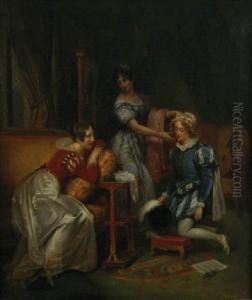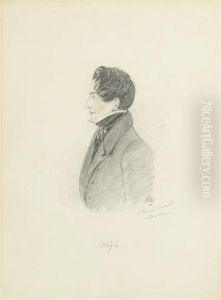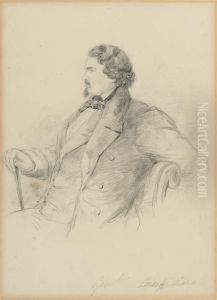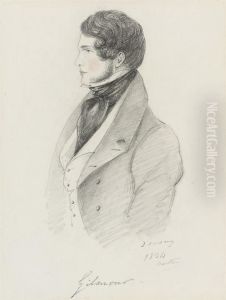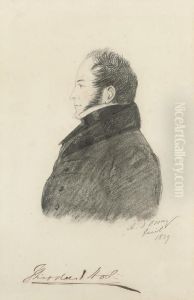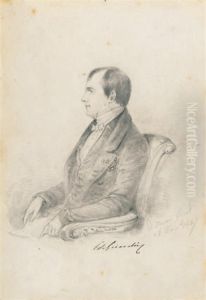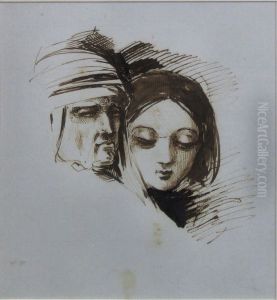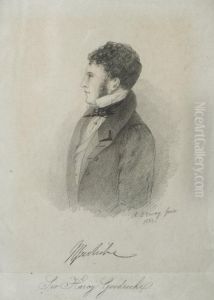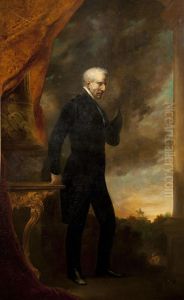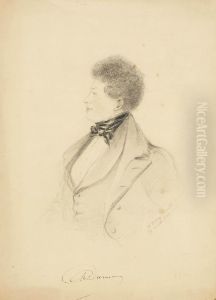Alfred, Comte D' Orsay Paintings
Alfred Guillaume Gabriel d'Orsay, better known as Count d'Orsay, was a French artist and man of fashion famed for his elegance and influential style. Born on September 4, 1801, in Paris, France, to one of Napoleon's generals, he was enmeshed in aristocratic circles from a young age. D'Orsay quickly became a prominent figure in London high society after moving to England.
His early military career was short-lived, and by the 1830s, Count d'Orsay had established himself as a talented portraitist. Although he was primarily recognized for his sartorial flair, d'Orsay was also an accomplished artist, known particularly for his portrait work, which included sketches, paintings, and sculptures. He captured the likenesses of many notable figures of his time, including the likes of Lord Byron and the Duke of Wellington.
D'Orsay's social charm and artistic skills were overshadowed by his romantic entanglements. He had a close relationship with the Gore family, particularly with Lady Harriet Gore and her husband, Lord Blessington. After Lord Blessington's death, rumors circulated about the nature of d'Orsay's relationship with Lady Blessington, which was a subject of much society gossip.
His influence on the arts extended to his role as a patron and advisor. D'Orsay was instrumental in the founding of the British Institution for Promoting the Fine Arts and was a friend to many writers and artists, including Charles Dickens and Edward Bulwer-Lytton. His lavish lifestyle, however, led to financial difficulties, and d'Orsay eventually found himself in considerable debt.
Count d'Orsay died on August 4, 1852, in Paris. Despite his debts, he left behind a legacy as an icon of style and a contributor to the arts. His portrait work remains a valuable insight into the fashionable circles and notable personalities of the early Victorian era.
